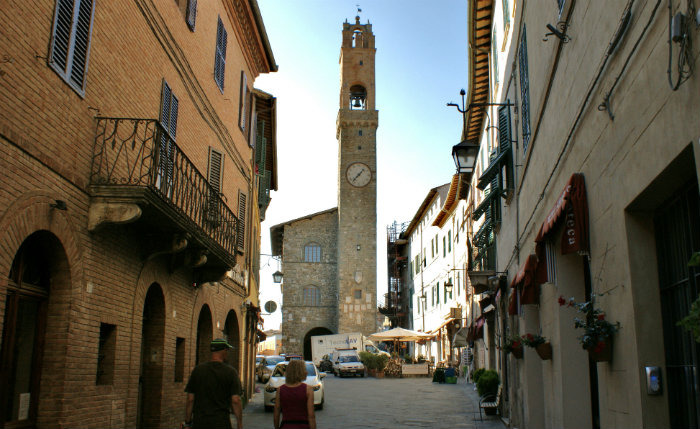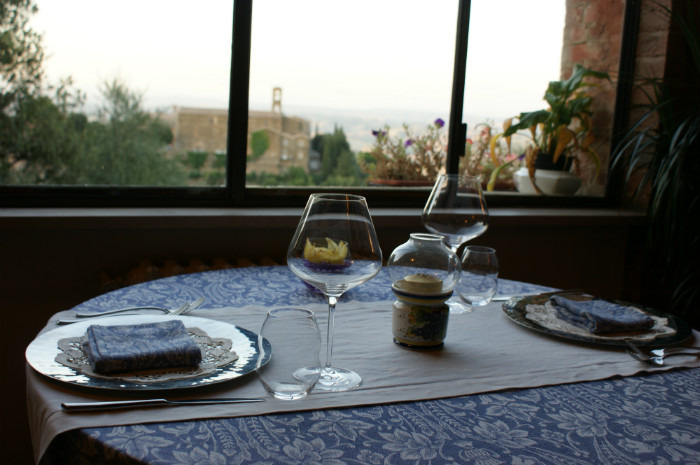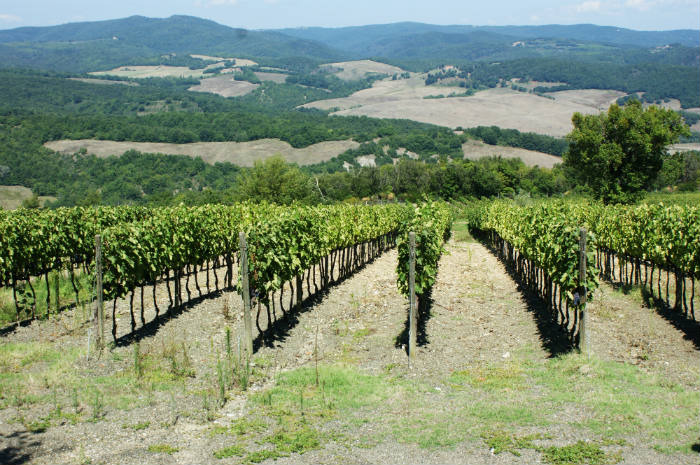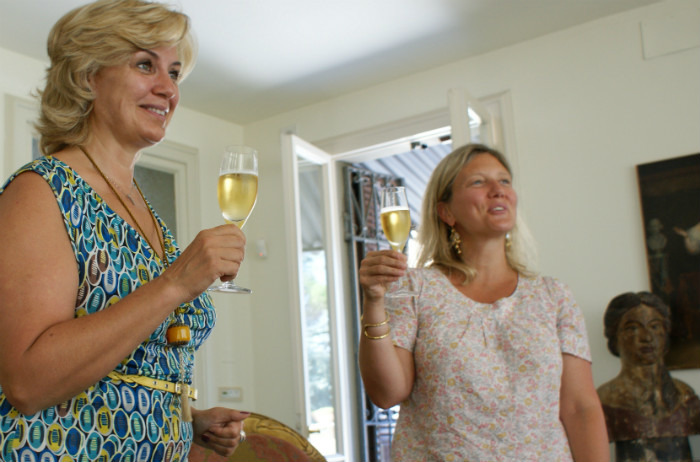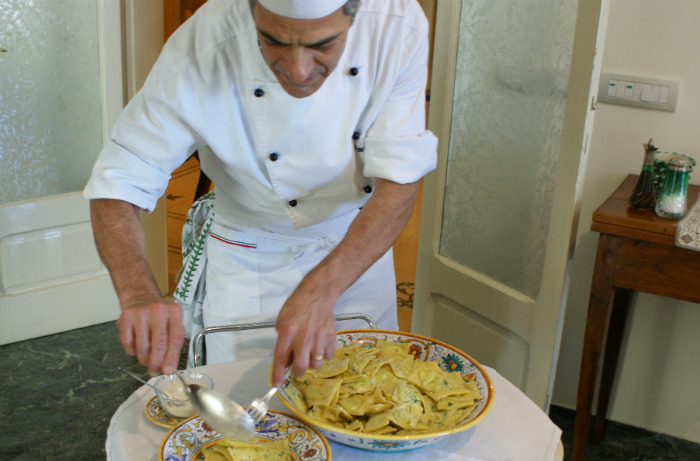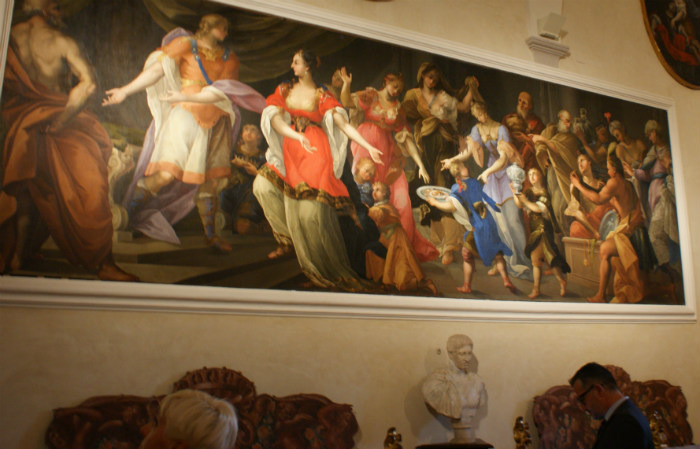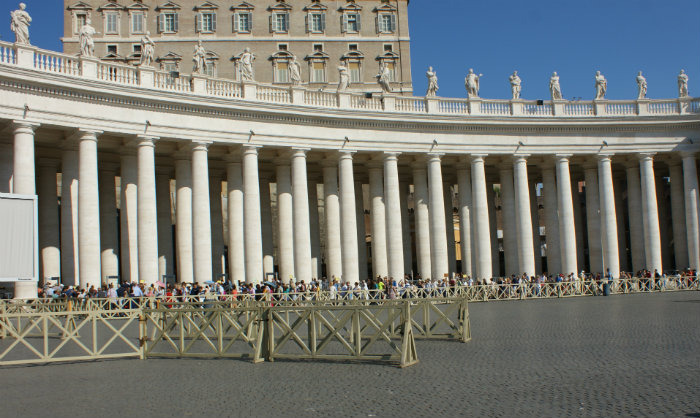Eating Across Italy
A half-century ago, Montalcino was a town with a past — founded in the 13th Century — but not much of a future. Then in 1967, a small group of winemakers, including Silvio Nardi, founded the Brunello di Montalcino consortium. Today, it's famous for its hearty, long-lived red wines, and wine pilgrims from around the world come to Montalcino to drink and pay homage.
Welcome to Montalcino
I check into the Albergo di Giglio on a narrow street near the center of the old city. There I am welcomed by owner Mario Machetti and Emilia Nardi. The 12-room inn dates back to the late 1800's, and an early menu from its restaurant boasts of luce elettrica (electric lights) and acqua potabile (safe drinking water).
Dinner with a View
Before the food is served, corks are pulled on a Silvio Nardi Rosso 2013 and a Brunello 2010. I order a Brunello meal — first, a rich risotto al Brunello and then braised veal al Brunello. But my favorite dish is a local salad called panzanella, a flavorful blend of small bits of reconstituted stale bread with chopped tomato, celery, cucumber, onion, and lettuce.
Backwoods Bounty
The next morning we drive northwest of the city to Casale del Bosco, the Nardi's large estate of woods and vines. Emila's father, whose family manufactured farm equipment in next-door Umbria, bought the isolated property in 1950. Wines from this region, somewhat cooler than further south, are known for their elegance.
Cellar Dweller
We visit the cellar where there is the quiet before the storm that is harvest. Brunello is made from sangiovese grosso, which has many clones. After fermentation, aging takes place in oak barrels, where the wine must rest for two years, plus additional months in the bottle. Brunello will continue to mature for decades.
Boar-ing Pasta
After the cellar tour, we have lunch on the estate's patio. The main course is a manicotti stuffed with boar, pigs which make every effort to grow fat on sangiovese grapes stolen from the vineyards. That night, we are treated to a hearty Tuscan tomato soup, a specialty of Boccon Di Vino restaurant overlooking the valley vineyards.
Truffle Sack
The next day we go shopping in Anghiari at the historic Busatti textile factory, which is also owned by the Nardi family and which sells fine linen and other household fabrics worldwide. Michelangelo Formica shows us a fazzolettone, which can be used to gather truffles, serve as a carrier for picnic lunches, even worn as a neckerchief.
They Say It’s Your Birthday!
Her staff alerts us that today is Emilia's birthday (a gentleman never reveals which one), so Italian bubbly from Franciacorta starts to flow as soon as we reach her residence for lunch. Catherine Cutier of Kobrand, the company which imports Silvio Nardi wines into the U.S., leads the first of many toasts.
Pasta Lotsa
Following an array of appetizers in Emilia's parlor, we are called to the table where a private chef parcels out rich ravioli stuffed with ricotta and parsley. We savor it with a trebbiano di Abruzzo with a lot of savory notes to match the spice and cheese of the pasta.
Here’s the Beef
For our main course, we have a juicy veal loin chop from a local breed of cattle called "Chianini" that are as native to Tuscany as is sangiovese. Emilia has raided her cellar for something new and old — first, a new 2010 vintage cru, Nardi Poggio Doria, then a 1990 Château Latour. Dessert is freshly whipped gelato made from zabbaglioni and vin santo.
Up with the Arts
That evening we are treated to a tour of the Castello Bufalini in Città di Castello, where we learn how the one per cent once lived, followed by an operetta concert in the courtyard as part of the Festival delle Nazioni. We sneak in a pre-theatre snack across the street at Il Dongione. The tagliatelle of guinea fowl in sage butter makes me want to sing for my supper.
St. Peter’s Queue-thedral
Our final morning, we drive to Rome to tour St. Peter Basilica and then the necropolis below. The line moves quickly, and we are soon inside to see the jaw-dropping magnitude of the vast papal edifice, large enough to comfortably cradle hundreds of pilgrims shooting selfies. Underground, it was a different story — the cramped burial vaults of both Christians and pagans.
Eponymous Pasta
Yes, there once was an Alfredo who invented pasta named after himself – fettucini Alfredo, a rich mélange of butter, cream, Parmesan cheese and salt and pepper. We visit his shrine — restaurant Alfredo alla Scrofa — for lunch. The sauce is whipped up tableside to be enjoyed with a bottle of Silvio Nardi "43" Tuscan IGT red.
Elegant Eggplant
We give a farewell toast to Rome at the posh Ristorante Mirabelle with its rooftop view of Rome and St. Peter's in the distance. We dine on guinea fowl and cannelloni with summer truffles. But we can't leave Italy without paying homage to the humble aubergine, here elegantly served in a terrine. Grazie, Emilia, grazie!
